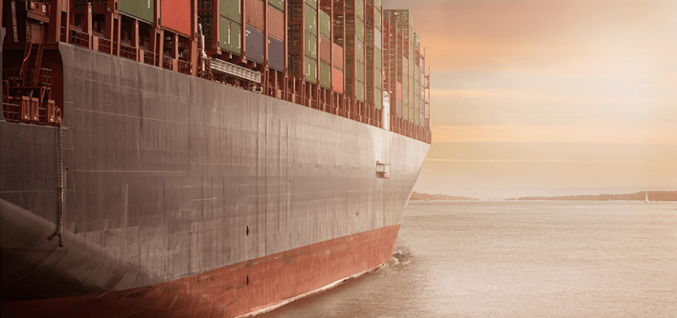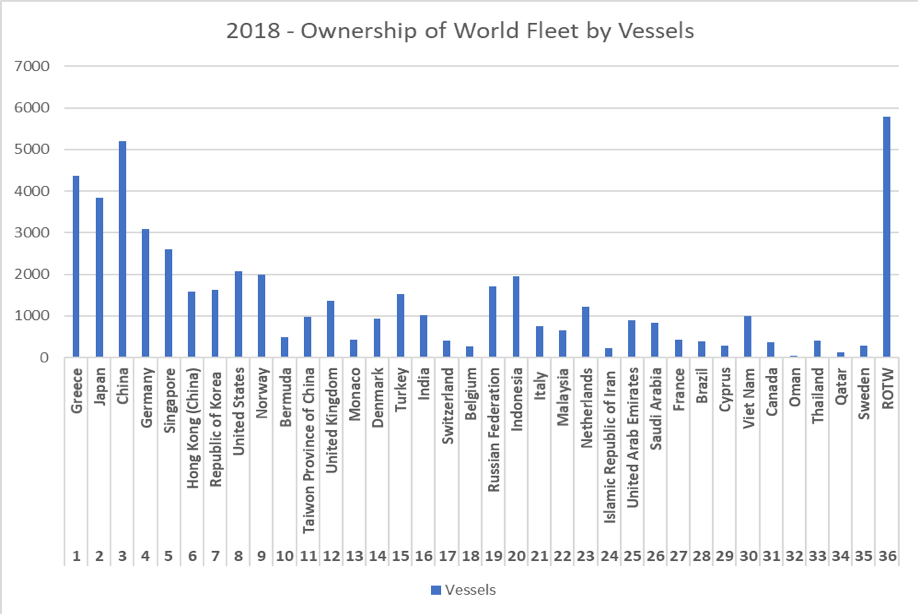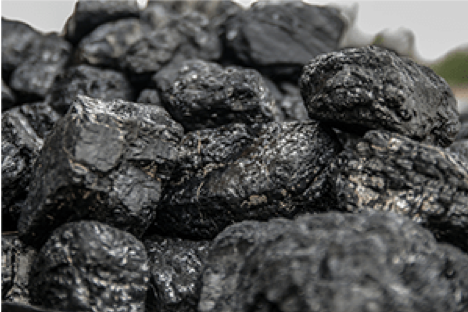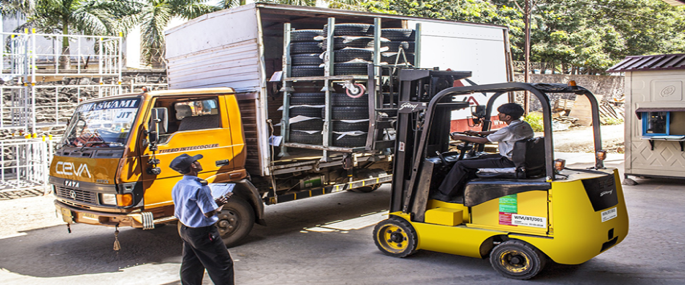To the uninitiated (which included me at one stage), these industries are same or similar and it might come across that there is no difference between Maritime, Shipping, Freight, Logistics and Supply Chain.
But once you are involved in the business or know about these businesses, you will very soon understand that these are very different industries with different workings, assets, architecture, requiring very different sets of qualifications, experience, expertise, knowledge and attitudes.
In this article I unpack the difference between Maritime, Shipping, Freight, Logistics and Supply Chain and how it is all connected, starting with some simple definitions of these terms.

- Maritime Industry = anything related to the ocean, sea, ships, navigation of ships from point A to point B, seafarers, ship owning and other related activities.
- Shipping Business = the act of carriage of cargo from point A to point using the ships which falls under the Maritime industry.
- Freight = the cargo that is carried using the shipping services offered by the shipping lines using the ships which falls under the Maritime industry.
- Logistics Services = the processes involved in getting the cargo from the manufacturers warehouse to the receiver’s warehouse including arranging for shipping services offered by the shipping lines using the ships which falls under the Maritime industry.
- Supply Chain = the whole granddaddy process comprising of all aspects in a product cycle, for example from picking of the fruit at a farm in Point A to delivering the fruit to the shelf at a store in Point B using all of the above mentioned industries, businesses and services.
Maritime Industry
It is fair to say that Maritime Transportation has been and still remains the backbone of global trade and has been so since the Egyptians, Greeks, Romans, Arabs, Indians, Chinese, Europeans all started sailing and improvising the sailing methods from sailboats, dhows, long boats, dragon boats, steamships to the current ULCVs, VLOCs, VLCCs etc.
Maritime transportation is a derived demand whose main purpose is to support trade, business and commerce – whether global or domestic, whether cargo or people.
An estimated 89.5% of global trade is carried by sea. As per UNCTAD figures, in 2016, world seaborne trade reached a volume of 10.3 billion tons with a predicted expansion of 3.2% between 2017 and 2022.
The growth, numbers and the volume involved makes the maritime industry one of the most globalized industries in the world in terms of ownership and operations. Not just in terms of ownership, the Maritime industry also provides employment for an estimated 1.65 million seafarers working in the global merchant fleet across the world.
Here are a few stats for you to think of, about the Maritime Industry:



Shipping
As briefly defined above, Shipping is the act of carriage of cargo from point A to point using the ships which falls under the Maritime industry.
Cargoes are carried by various types of ships all around the world:
- Oil Tankers
- Dry Bulk Carriers
- General Cargo Carriers
- Container Carriers
- Gas Carriers
- Chemical Tankers
- Off Shore Vessels
- Ro-Ro ships
- Ferries/Passenger Ships
- Others

All these ships are operated by shipping lines for commercial gain. A lot of these ships are owned by the shipping lines operating them and a lot of them are chartered by the shipping lines from the ship owners.
These shipping lines may be operating a liner service or a tramp service. On the liner service the majority of the business is handled by container shipping lines.
There are many container shipping lines operating “shipping services” around the various trade lanes in the world, and the Top 20 shipping lines around the world derived from Alphaliner are as below.

As you can see, some shipping lines are much bigger than the others.
What is interesting and scary to an extent is that most of the bigger ones are in global alliances and with the recent commencement of the ONE network, these container lines in the alliances account for around 80.7% of the global container shipping market share.
The lines in these alliances come from within the Top 15 of the Top 50 lines which means the other 35 lines share 19.3% of the global container shipping market.
Well anyway, shipping includes (but not restricted to) activities as below:
- Booking cargo for specific vessels, sometimes weeks and months in advance
- Ensuring that all cargo booked is planned on the intended vessels
- Ensure that the cargo that is planned on the vessels is actually shipped
- Ensure that the stowage planning is done properly on the vessel to optimise the vessel loading
- Ensure that all containers loaded have their VGM
- Ensure safe loading and discharging of the cargo
- Issuing bill of lading and other documentation for all cargo loaded
A typical shipping line or shipping agency office have various departments such as planning, marketing, sales, container department, vessel operations, documentation, finance, administration, procurement etc.
Shipping involves planning and identifying the most profitable trade routes around the world, the volume of cargo available on these routes, the number of ships that must be employed on these routes, the ports that this service must call in order to maximise business, the transit days that a ship will take for a round trip, the cost per voyage including operational costs, port costs, fuel costs, the man power required etc for each voyage.
Phew, I am out of breath even writing about the processes involved.
Freight
Many of us in the business relate to freight as “money”. Freight is what the entire global trade revolves around, but also has a different meaning to money.
In simple terms, FREIGHT refers to CARGO that is carried by a carrier (ship, road, rail, air) in exchange for commercial gain.
In the context of waterborne freight, freight refers to the cargo that is carried using the shipping services offered by the shipping lines using the ships which falls under the Maritime industry.
There are various types of cargoes that are shipped around the world.
Dry Bulk, which covers five major bulk commodities (iron ore, coal, grain, bauxite and alumina, phosphate rock), minor bulks (forest products and the like), Containerised Cargo, General Cargo/Break Bulk accounts for about 70.2 per cent of global trade and Wet Bulk such as tanker cargo (crude oil, petroleum products and gas) of about 29.8% accounts for the balance.
If you notice, bulk and break bulk is shown separately (although as part of dry cargo) because there is a discernible difference between bulk and break bulk.
Freight may be carried in different parcel sizes ranging from 500 gms using a bicycle courier to more than 400,000 tons using a Valemax ship.
Of course different freight types have different characteristics and susceptible to different types of cargo damage and needs expert handling in all cases.

Logistics
The term logistics is said to have originated from the military and is said to have been initially used to define troop and equipment movement in the various areas of military operations.
Logistics is the process involved in getting the cargo from the manufacturer’s warehouse, point of origin, mine site, farm etc to the receiver’s warehouse, door, store etc.
The process of logistics actually begins way before the actual shipment takes place as it involves discussing and deciding on the delivery schedules suitable to both the buyer and the seller.
Once these are decided, then the logistics services provider needs to decide on the best method of moving the cargo from the seller’s door to the receiver’s door.

A LSP (Logistics Services Provider) should have the expertise to choose the best solution for the movement of the cargo. Cargo is moved using road, rail, air and sea and each of these modes of transport have their own peculiarities and characteristics.
Air freight may be quicker than sea freight, but much more expensive. Rail freight may offer more reliable transit times and schedules than road freight and may also be better for the environment. Road freight has the capability to offer complete door-to-door service and can be considered as one of the more economical means of transport.
The planning, implementation and execution of the various aspects involving the movement of cargo such as materials, services, information, shipping, documentation, scheduling, tracking and delivery is the main function of logistics.
Supply Chain
Supply Chain is the whole granddaddy process comprising of all aspects in a product cycle, for example, from picking of the fruit at a farm in Point A to delivering the fruit to the shelf at a store in Point B using all of the above mentioned industries.
Supply chain involves a network of suppliers, transporters, warehouses, distribution centres, shipping lines, logistics services providers all working together from the creation and sale of a product till its delivery to you and me.
Supply chain management is the management of all the supply chain activities in developing and running the supply chain as effectively and efficiently as possible.
This management may involve product development, sourcing, production, logistics, and all the system required to coordinate and delivery these activities.
A simple supply chain may be made up of few different processes that are linked to the movement of products along the chain. A typical supply chain starts and ends with the customer.
- Customer places sales order with the company that will supply the products that they are interested in.
- Based on this sales order, the supplier will go the planning stage. The supplier will create a production plan (if the products needs to be manufactured) or sourcing plan (if the supplier is sourcing the product from somewhere) or supply plan (if the supplier already has the product can supply straightaway).
- The procurement process follows the planning process wherein the supplier will need to procure the raw materials in case they are manufacturing or source/procure the product itself from elsewhere.
- The next process will be the production process where manufacturing is involved wherein the order is produced.
- This is followed by an inventory process which will include receiving the goods from the various suppliers at the supplier’s warehouse, its storage and stock monitoring. Depending on the type of business, this could be the start of the logistics process or could form part of the logistics process.
- Last but not the least is the transportation process which involves logistics and shipping.
- Customer receives the goods and that is the end of that particular chain.
The act of managing all of the above mentioned is termed as Supply Chain Management for which many of the companies may use ERP systems.
Conclusion
As you can see, there is a vast difference between Maritime, Shipping, Freight, Logistics and Supply Chain and I haven’t even covered the other related industries such as Ports, Terminals, ICDs etc.
There are different career opportunities in maritime, shipping, freight, logistics and supply chain and each of them requires different qualifications, skill sets, expertise and experience.
ICS is one of the very few qualifications (if not the only one) which covers all of the above mentioned industries and businesses and prepares you for the real world.
About the Author
Hariesh Manaadiar (FICS) is a committee member of ICS-SA and is also Branch Head of the Johannesburg Chapter. He has been in the industry for the past 29 years and shares his knowledge and experiences on his highly acclaimed educational blog – Shipping and Freight Resource
